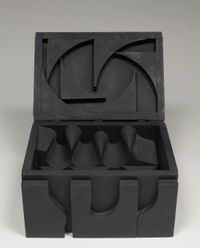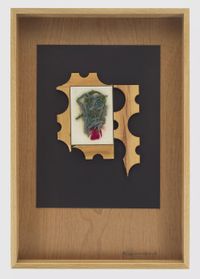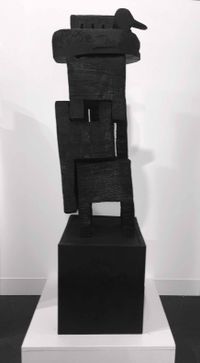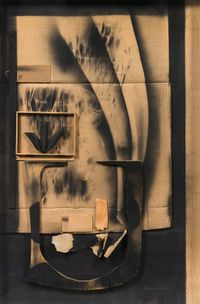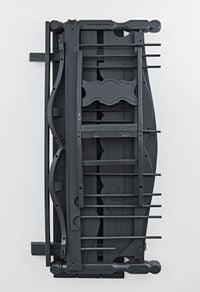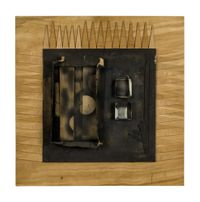Louise Nevelson (b. 1899, Kiev; d. 1988, New York) moved to New York City in 1920, where she later studied at the Art Students League (1929–30) under the tutelage of Kenneth Hayes Miller. She continued her education by studying with Hans Hoffman in Munich and working as an assistant to Diego Rivera prior to participating in her first group exhibition organized by the Secession Gallery at the Brooklyn Museum in 1935. As a part of the Works Progress Administration, Nevelson taught art at the Education Alliance School of Art and received her first solo exhibition at the Nierendorf Gallery in New York City. During the mid-Fifties she produced her first series of black wood landscape sculptures. Shortly thereafter, three New York City museums acquired her work: the Whitney Museum of American Art purchased Black Majesty (1956), The Brooklyn Museum purchased First Personage (1957), and The Museum of Modern Art purchased Sky Cathedral (1958). Pace has represented Nevelson's estate since 1963.
Read MoreLouise Nevelson (b. 1899, Kiev; d. 1988, New York) moved to New York City in 1920, where she later studied at the Art Students League (1929–30) under the tutelage of Kenneth Hayes Miller. She continued her education by studying with Hans Hoffman in Munich and working as an assistant to Diego Rivera prior to participating in her first group exhibition organized by the Secession Gallery at the Brooklyn Museum in 1935. As a part of the Works Progress Administration, Nevelson taught art at the Education Alliance School of Art and received her first solo exhibition at the Nierendorf Gallery in New York City. During the mid-Fifties she produced her first series of black wood landscape sculptures. Shortly thereafter, three New York City museums acquired her work: the Whitney Museum of American Art purchased Black Majesty (1956), The Brooklyn Museum purchased First Personage (1957), and The Museum of Modern Art purchased Sky Cathedral (1958). Pace has represented Nevelson's estate since 1963.
